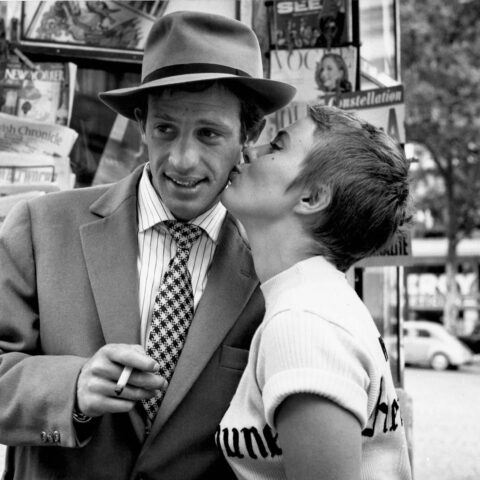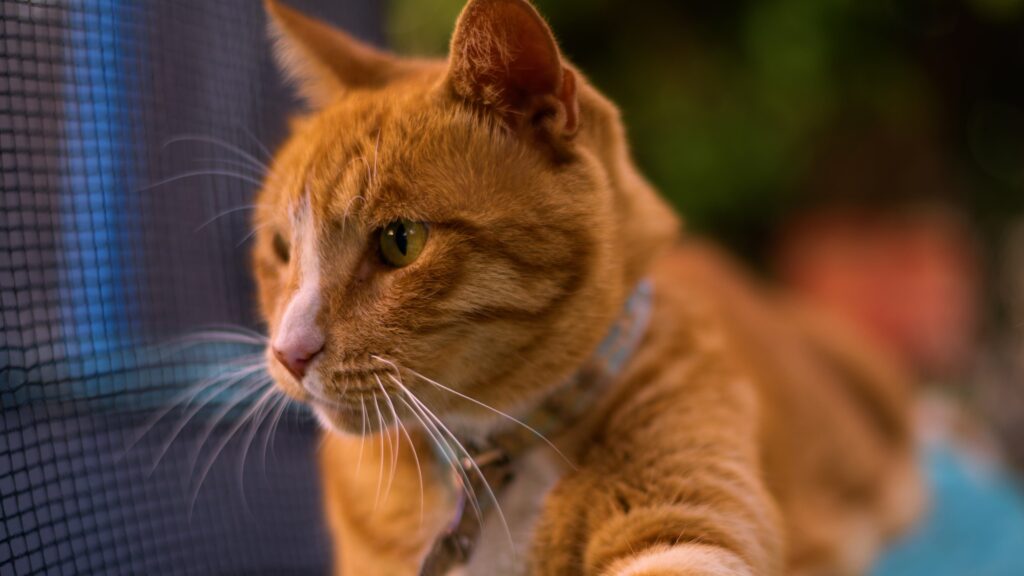
In Saving Mango, director Oren Peled crafts a deeply emotive story of survival, loyalty, and self-discovery through the eyes of a stray cat named Mango. This ambitious independent film has resonated with audiences across festivals and streaming platforms, capturing the hearts of animal lovers and cinephiles alike. With a captivating voiceover by actor Josh Bloomberg and a poignant portrayal of a homeless man by the director himself, Saving Mango is more than just a tale of a cat navigating a world without his family; it’s a reflection on abandonment, resilience, and the unexpected connections that shape our lives. In this exclusive interview, Oren Peled shares the journey of bringing Mango to life on screen, the challenges and rewards of working with animals, and the ways in which the story of a stray cat connects to universal themes of loyalty and loss. From his decision to voice Mango’s inner thoughts to his unique insights on authenticity in animal portrayal, Oren Peled offers a heartfelt look at the making of Saving Mango and what he hopes audiences will take away from the film.
Indie Cinema: The production of “Saving Mango – A Cat’s Story” lasted over five years, which is quite a long time. What were the most significant challenges you faced during this extended timeline, especially when working with your cat, Simba, as the star?
Oren Peled: First of all I had to remind myself at any given moment during filming that the star of my movie can’t be trained and do not understand human language. The key word here was patience, lots of patience. Pretty soon I realized that in order for this project to succeed I must think outside the box, and in fact to shoot this film as if it was a nature film and not a feature narrative film. I mean not shooting the film in the conventional way but “fish it”…fish as many authentic moments as possible that will connect together to a coherent and believable film from the raw footage. There were so many days of filming where I tried to get Simba to move from point A to point B and it didn’t always work as I expected, although it was clear to me that a cat cannot be tamed but only manipulated, but still… in some cases it felt like a real nightmare, how many times can you throw a piece of meat from point A to point B and still expect Simba to actually move to point B?
Now, add to that the fact that Simba was a very suspicious cat towards strangers, which means that it’s very challenging to almost impossible to put together a real filming set with 20-30 crew members around him. So that was my main reason to take my family as the crew members. And in addition to all the challenges, it was clear to me from the beginning that it would be very difficult to raise an external budget for the film. In Israel, my country, the majority of feature films are financed by government film funds. Try to explain to a fund like that that the main role in your film is played by a cat, and you can’t guarantee that it will still be around next month, won’t be ran over tomorrow or will be injured by a fight with another cat. An outdoor cat that lives in the garden is exposed to so many countless dangers in the street, so who would want to invest money in a film that is produced at such a high risk like mine?
It reminds me of how during filming I would jealously watch movies with dogs and see long and complex shots with a drone or crane that could only be filmed with dogs. When you want to produce the same thing with a cat, it can be very frustrating, and then suddenly you also understand why in movies with cats you see in many scenes the cat is statically positioned next to a window or sit on a chair until it leaves the frame, without complex actions. An average film production, which usually costs a lot of money per shooting day, cannot afford an unexpected star who delays the filming because of overly complex shots.
IC: How did you come up with the plot for “Saving Mango”, where Mango the cat is left to survive on his own after his family is involved in a car accident? What influenced this narrative?
Oren: It all started one day in 2015 when Simba disappeared for three days, we looked for him everywhere possible but could not find him. After three days he came back tired and weak with a strange blister on his neck. We called the vet who immediately determined that the blister was a result of an infection due to a fight Simba had with another cat. If such a toxic blister is not ruptured soon it could enter his bloodstream and endanger his life so he was very lucky that he returned home after three days and not after a week. And when I heard that I was afraid to think what he would do if we weren’t in the house at the time, if we were going on vacation and he needed help like that. Because when we were away from home for more than a few hours, there were always neighbors who took care of him when needed until we returned, but it is not certain that they would have perceived this emergency in time and know how to act in time. So this is where I got the idea for a film about a cat who is left alone at home after his family disappears from his sight, he has no idea what happened to them, where they are and when, if at all, they will return – so he has two choices: either leaving them and look for another place to live or keep waiting for them next to the door, hoping that one day they will return home.
IC: Filming a cat must have involved a lot of unpredictability. You’ve mentioned that Simba’s reactions often ‘rewrote’ the screenplay. Can you share a specific moment where Simba’s behavior led to a better outcome than you had originally planned?
Oren: Ok, I’m gonna make a spoiler here for those who haven’t seen the movie yet. One of the best examples for that occurred five minutes before the film ends, when Mango was sure that the family had returned home. When we filmed the scene he was sitting on the trampoline next to the family, and then suddenly he jumped up and stared for a few moments with a curious and lively look at a distant point at the end of the street. I assume that at that moment he just saw another dog or cat, but when I saw this footage in the edit I realized that I had received a huge gift from him: because at this moment it would make the most sense for his curious gaze to be directed… towards the parking lot, where he would see the car, and that way the viewers would receive a real proof that the family did return home. And this powerful moment I couldn’t get through any manipulation I would put on Simba, this moment worked well because it was authentic and came from him alone.
IC: You’ve spoken about how your filming approach shifted from traditional narrative filmmaking to more of a documentary nature style. What was the turning point that led you to this realization, and how did it impact the film’s overall production?
Oren: I kept the general plot lines the whole time in the way they supposed to be, because at the end it was and remains a narrative feature film with a story that should start at point A, go through point B and end at point C. There, of course, is the heart of the story and if I couldn’t implement it, I would probably give up on this project and move on. But between these three points there was a lot of space for improvisations and changes, because you can’t expect a cat to give you exactly what you need, and also because there is something in the behavior of an animal and the inhuman interpretation it gives to a situation – that is very much worth using.
But I’ll tell you something else, if I’d stuck to the story board and insisted on shooting it exactly as I imagined it I’d probably go crazy pretty soon. If you remember the scene where Mango imagines the first time that the family comes home, for four nights I tried to get Simba (with the help of many pieces of pastrami) to run from the edge of the garden towards the parking lot for several hours with four cameras pointing at him from different angles and it just didn’t go as I hoped, and then at some point I realized I had to let go, and to say to myself that What needs to happen just happens. So at that moment I decided to change my approach and started placing the cameras in the garden as if they were security cameras. I would aim them at 4 different angles, take Simba out to the garden, go into the house and let the cameras shoot for a few hours and the next day go over the raw material to see if there is anything interesting. There is a moment in the film where he leaps towards the bag of food that Grandpa Gideon threw to him – this is one of the examples of using his authentic materials, most of which were filmed without my intervention, for this method, when in reality he just runs to the edge of the garden to chase away a cat that entered his territory.
At the end of the day, shooting a movie in a documentary nature style with 4 cameras, conveys a huge challenge in the editing, and all of a sudden you understand that you are dealing with something that is often more close to National Geographic film then a narrative.
IC: Nearly 40 minutes of the finished film includes special effects. Could you explain how you used effects like green screens and roto scoping while still maintaining the authenticity of using a real cat?
I love this question, the truth is that I had no way to finish the film without these effects, because at the end you can’t make a cat “trapped” in a truck, moving it 20 kilometers away from it’s house and then make it come back home happy, without green screen, roto scope or animation. After all, the cat’s safety is above all and there is also no way to create these scenes with the help of physical effects. So there was a lot of work with green screen and roto scope. I used green screen mostly for close ups and medium shots, and then roto scope for shots that require a greater complexity of movement that takes place in a larger space, such as when Mango runs home in the rain or runs in the morning to the railroad.
In addition, I built a “bank” of Simba’s facial expressions on a green screen background. That way I could integrate him into the film as happy, sad, pensive, angry, etc… I don’t know what he really felt every time he gave me a cinematic facial expression that was worth using, but every time I saw an expression that was worth using I immediately cataloged it in the “Mango’s facial expressions” folder. Some of these expressions are pure gold to me, they were worth waiting for. By the way, it is likely that today the AI would shorten my work, but at the time when I was working on these effects, the AI would have sounded too imaginary and not applicable.
IC: What led you to decide on using a voiceover to vocalize Mango’s thoughts? Was this part of your original vision for the film, or did it evolve during production?
Oren: The truth is that most of the film takes place in his head or very close to his head, so I saw no other option but to dub him. It was clear to me quite early on that matching the character with the right actor is one of the most important things here. After hearing a few actors I found Josh Bloomberg and from the first sound test he sent me I immediately knew that this is the guy! Like Christopher Reeve’s screen test for Superman, you know right away that there is no need to keep searching! This is it… you found the right actor! Josh immediately knew how to breathe life into this character and gave Mango the right tone that was important for me to convey for this character – from a spoiled cat who depends on others to an independent and mature one. When we met in his studio and started working it was after he saw a rough cut of the film (in which temporary subtitles replaced the dubbing that did not yet exist). I saw him trying to adjust himself to the recording timing that I set from the beginning in the editing (that was not easy to adjust to), so I suggested to him that we turn off the screen so he could be free from the shackles of the timing, and when he did that I felt that he was going free and pearls really came out of his mouth! After the recording I had in my hand so many takes… faster, slower, so different from each other and giving a different interpretation and tone each time. And then when I went back to the editing room and selected Josh’s appropriate take for each sentence, I actually reopened the edit and slowed down or sped up the video editing speed for the dubbing, to let his voice be the leader, not the video. It definitely paid off.
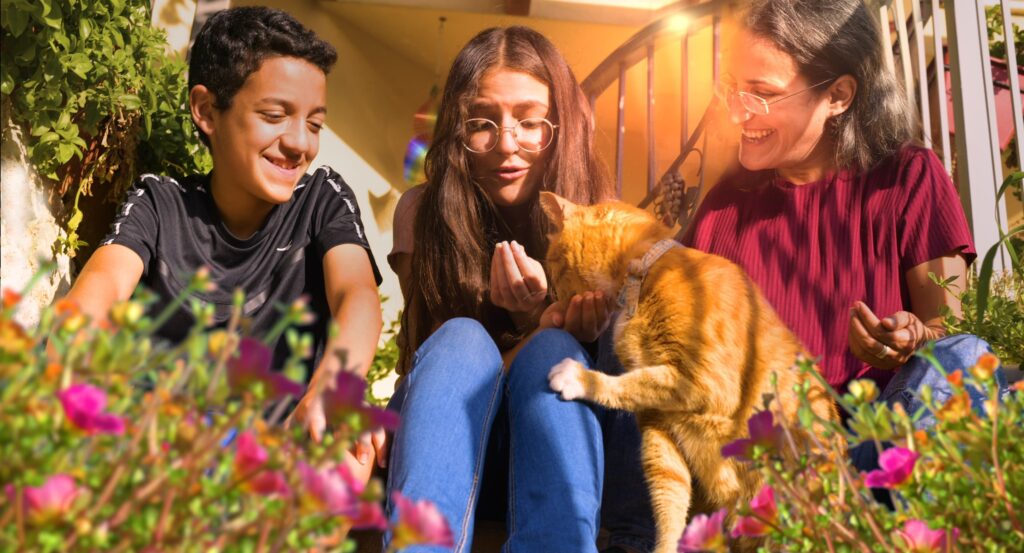
IC: The character of the homeless man plays a pivotal role in “Saving Mango”. Can you explain why you decided to portray this character yourself?
Oren: The character of the homeless is supposed to be a pivot in the plot through which the “before” and “after” in Mango’s story are defined. The homeless person should make Mango leave his comfort zone and create for him his most important decision: whether to go and seek his fortune elsewhere or continue to wait for his family at the door of the house, hoping that they will return home one day. In addition, this character is supposed to raise the drama level of the film to new heights after Mango has already exhausted the variety of dangers that a cat character can face with in its natural environment. I want you to see his good heart and good intentions behind all the slapstick, drama, and horror masks he projects, but with that I don’t want it to be revealed so easy – I mean if Mango had met a nice grandma or a kid instead of the homeless, then the movie would be over in five minutes. After all, I have to keep the audience on the edge of their seats throughout the entire film, and the homeless character is one of many “tools” for gaining that purpose. The homeless should be the best friend who comes at the last minute out of nowhere and helps Mango, but he can’t be the solution for him, nor does he have the tools that the nice grandmother or the kid have: they can offer Mango a home, while living with the homeless will only give Mango a reflection of his sad potential fate unfortunately – the garbage dump… because many of the cats live there or end up there. Sad but truth.
A friend of mine defined the presence of this character in the film as accurately as possible: “It’s good that he was there and it’s good that he’s gone.”
There were a lot of actors I imagined as the homeless, but I also had to be realistic because I produced this film with a very very low budget, even compared to other independent films, so the decision to play this role myself was more out of a lack of choice and less out of desire. Although I knew I could play the role well and do it right, because standing in front of a camera and acting is not something foreign to me, but I think it is very exhausting to direct yourself as an actor and then take a step back from the character when you see the raw material in the edit, and especially know how to separate the director from the actor. It’s very complex when you want to get so many ranges of behaviors and reactions out of a very grotesque character who is supposed to move quickly between slapstick expressions to dramatic madness and who is supposed to constantly mislead you about his intentions. After all, you wouldn’t trust this guy in real life, and at the same time you find out as you go that he’s just a lonely guy with a good heart just looking for company. So following your question, although I am very satisfied with the result, it would have been better and easier for me to have another actor play the character and for me as a director to be able to get enough distance from the character to work from a more distant perspective. I guess most directors would prefer to work like this, unless they have the germ of acting.
IC: “Saving Mango” has now been screened at several festivals and is available on streaming. How has the audience reception been so far, especially among cat lovers? Were there any reactions or interpretations that surprised you or made you see the film differently?
Oren: First of all, I am happy that my film is attracting interest. I certainly feel lucky that in our time, with the never-ending amount of content, films and channels surrounding us, a modest and low-budget film from Israel is gaining an attention and interest. Look, when I think about the whole thing of distributing movies 10 years ago versus distributing movies today, I feel very lucky to have a distribution deal on a streaming platform. After all, there is a tremendous inflation of content from every direction, everyone has a camera and a story to tell, but on the other hand our patience for consuming content has decreased dramatically because if there are endless movies and the selection is huge, then the huge supply also leads to an erosion of the desire to see movies and in general the ability to experience them and “survive” them until the end. So if a streaming platform finds my film worthy to be picked up from all the large amount of content that’s out there, then I’m very grateful for that. Regarding screenings in front of an audience and reactions to it, I can tell you that “Saving Mango” did not get to participate in festivals such as Cannes or Sundance, but in the most of the festivals in which it did participate, the reactions were wonderful. In one of the festivals, that took place in Romania, “Mango” won the Best Children’s Film Award, and in London, at the screening I attended as part of a festival of animal films (where it also won the Best Storytelling Award), I saw a heartwarming connection between the film and the audience. Someone behind me “interrupted” me from time to time with a sound of nose wiping, and at another screening at the same festival I was told about frenzied children who sat very attentive throughout the film.
It may be that the film also speaks to people by dealing with one of the most painful topics that exist: abandonment. Whether it happens in childhood or in our adult lives, from a child abandoned by his mother to a friend who suddenly “ghosts” us and disappears from our lives for no reason, and let’s not even begin to get into the question of where God is in our lives. The movie is first and foremost about that – the abandonment and the helplessness that follows… because there are no answers, only questions… Look, I live in a country where for more than a year now, everybody feels betrayed and abandoned by a government that deeply failed in its role and in its basic commitment to its citizens, and whose continued indifference over the years in any issue brought upon us the disaster of the terrible October 7th. Thousands of families experienced that day and are still experiencing a terrible abandonment for which my government has not yet taken a fraction of responsibility. This is abandonment in the most difficult sense.
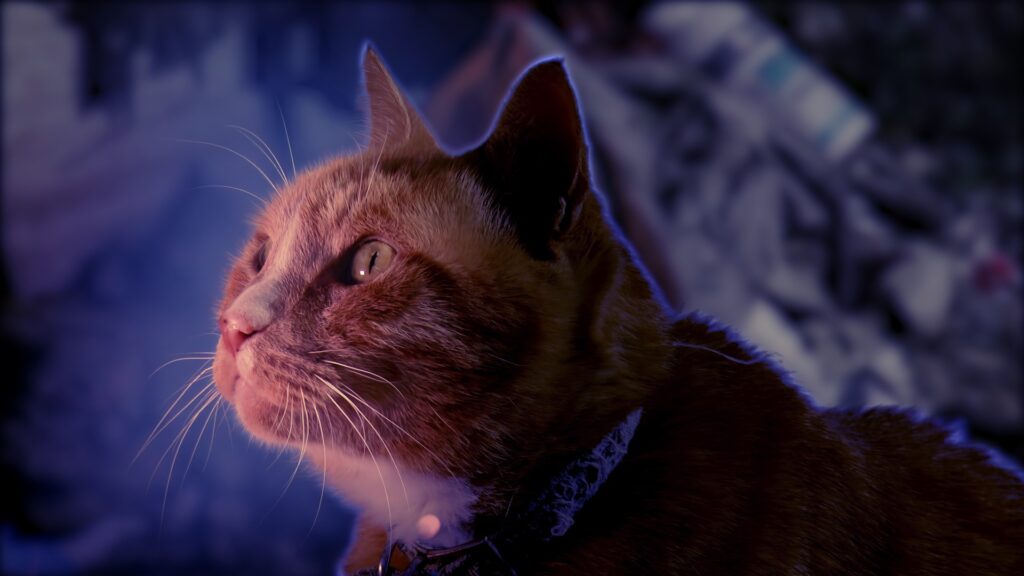
IC: What advice would you give to filmmakers who are considering working with animals, especially when aiming for authenticity rather than relying on animation or extensive training? What have you learned from this unique experience?
Oren: I’ll tell you what I told to Kean Cao, the founder and director of the Animal Future Film Festival when I was hosted there last year: Although it was very difficult and tedious to make my film, it was worth every second because there is no replacement to an animal in a film, with the beauty and the uniqueness it brings to the screen, no matter if it’s a dog or a cat or a turtle. So have animals in your films, they are the best performers ever, and with that, have some ground rools:
First thing to remember, especially if you are shooting a narrative film, is that the animal didn’t invite itself to participate in your movie. This is not an animal that we film in the wild from a distance of 200 meters with a close lens. In a narrative movie that is filmed with a domestic animal, unlike all of the surrounding crew members who know at any given moment what is their place and purpose on the set and what they need to do, the animal has no idea what to expect, so the more respect we show to it and the more secure it feels during filming, the higher chances are that the animal will cooperate optimally and as a result of this will also give us a better performance, and even will help us to shape the story.
In order for an animal to feel comfortable on a movie set, there should be on the set as few crew members around as possible; less people – less foreign smells there to distract the animal and possibly to make it feel uncomfortable. If it is a cat, then we also have to take into account that we take it out of its natural territory for the shootings, so it’s more complicated when it comes to a cat.
At the same time, as the filming days go by, I believe that the animal will begin to associate the filming location and especially the smell of the crew members and the filming equipment, and with the food or the reward that is given to it after every take, it will be much more accessible, and it will be much more easier to cooperate with.
More than that, we should take into account possible delays because of the fact that the animal is the only creature that participates in the film that has no idea what is happening around it, so if we are planning half an hour of a complex shot with the animal, maybe we should take into account that it could take an hour, and then delay other scenes that we planned to shoot that day to another day.
If we include in the same shot a large number of animals that had no interaction between them before, it is very likely that this will also delay the production, I would bring the animal into the set as early as possible and let it smell the place and the filming equipment, rub itself against it, put its smell on the equipment so that it feels part of it and feels comfortable with the equipment. And of course to shoot with many cameras as possible at the same time, so you don’t have to film the animal performing the same movement over and over again with many takes. It can certainly make it easier for animals and us.
And as long as we film in environment that respects the animals and doesn’t harm them, then it’s fine, and if someone is new to the field of filming animals and not sure what is allowed or not, there is a great guider: American Humane Association’s website, everything is there.
But there is always the obvious, that you don’t need any guide for:
Do not adopt an animal for the benefit of the movie and then throw it away, do not create a battle between two animals, do not put cats in water, in the pool, in the shower… the obvious.
And of course if your film requires creating seemingly cruelty scene, (which says that the character that the animal plays in the film was shown in a violent state but in reality on the set there was no violence at all) make sure to create it digitally only, with animation or video editing manipulations, and provide a video that will be accessible on the Internet that will show in an unambiguous way that this seemingly cruelty scene was created on a computer and that the animal was not abused in any way.
IC: For many animal lovers, this film resonates on a deeply emotional level. What do you hope cat owners and animal lovers, in general, take away from Mango’s adventure and his bond with his family?
Oren: If they will adopt a cat after seeing this movie… then my work is done, I can’t imagine ever topping that! People tend to forget that cats love humans despite their image of being snobs and antipathetic. It seems to me that when people adopt an animal, they automatically expect from it, even if not consciously, constant gratitude, they expect loyalty. But cats are not loyal to humans not because of bad behavior, but because of the fact that cats do not have the perception of loyalty and what is the nature of it as we, humans, understand it, and I don’t think there’s anything wrong with that. Cats know how to appreciate gestures, cherish gratitude and to miss. “Not only dogs miss their families” is really something I believe in.
So adopt a cat, you should, it’s a pure joy.
IC: After five years of dedication to this project, what’s next for you? Are you planning any future films, especially those involving animals, or do you see your filmmaking evolving in new directions?
Oren: The truth is, if you also count the time it took for the script to be developed in my head, along with the entire distribution phase of the film, than it soon reaches nine years. And there is still one last thing for me to do: towards the end of the work on the film, I started working at the same time on a mockumentary short film that “describes” an imaginary behind-the-scenes of “Saving Mango”. It was supposed to be something very comical with wild and crazy humor, and in it Simba is not only the main actor of the movie but also its editor, and so we bring a lot of ego with us and have credit wars like little kids. Unfortunately, Simba passed away before I could finish shooting the mockumentary, so this project is currently stuck. I thought of filling in the missing holes with AI, but I’m afraid it would look pale and defeat the purpose because although all the progress of AI is really impressive, this mockumentary has a specific comical tone that manipulation of pixels and artificial intelligence will not be able to bring in to the film, at least that’s what I feel. By the way, I recently toyed with the idea of turning this into a comical podcast (a kind of recorded production diary) because a lot of this script is actually a “ping pong” text between me and Simba (and I have already recorded Josh for the mockumentary at the same time I recorded him for “Saving Mango” three and a half years ago), so it’s a possibility I don’t rule out.
And as for future projects, I guess the ideas will come when they’re ready or when the universe feels it’s time for them. On a daily basis I work as a cinema teacher and video editor and I like where I am.
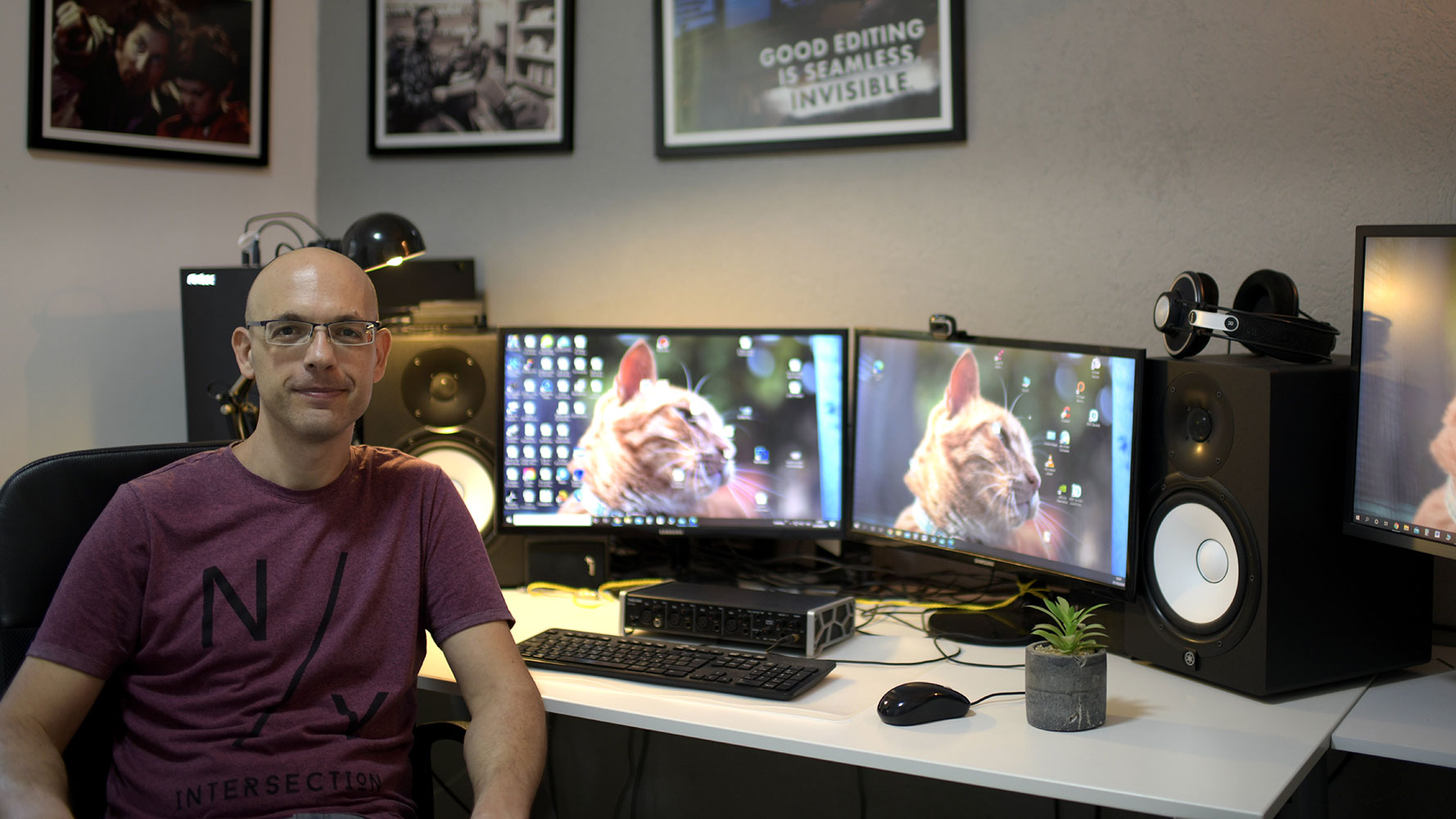
Oren Peled
Oren Peled is an Israeli independent filmmaker, video editor, and cinema teacher. He has dedicated his career to storytelling through film, using both live-action and animation to explore meaningful themes. His debut feature, The Ventilators (2006), was an animated film that found its audience in Israel through DVD and VOD distribution by NMC United. Peled’s latest project, Saving Mango – A Cat’s Story, is his second feature film, showcasing his passion for unique and heartfelt narratives. In addition to his filmmaking, Peled actively teaches cinema, sharing his craft and inspiring new generations of storytellers.
This film is available now both on Prime Video via Prime Video Direct Content Submission Portal (in the US and the UK) & Tubi (in the US, Canada, Mexico, Australia and the UK).
Official website of the film: https://www.savingmango.com
